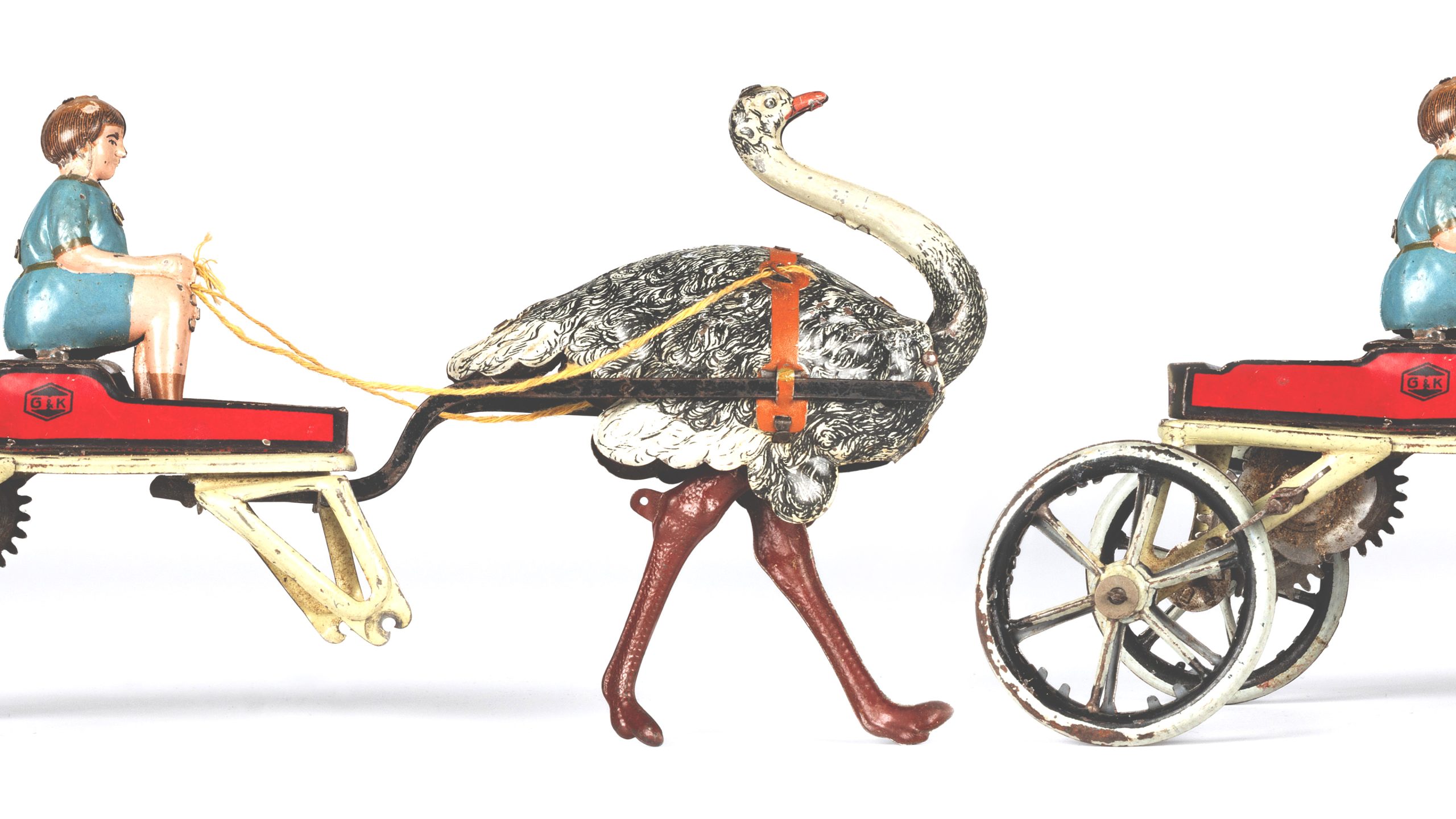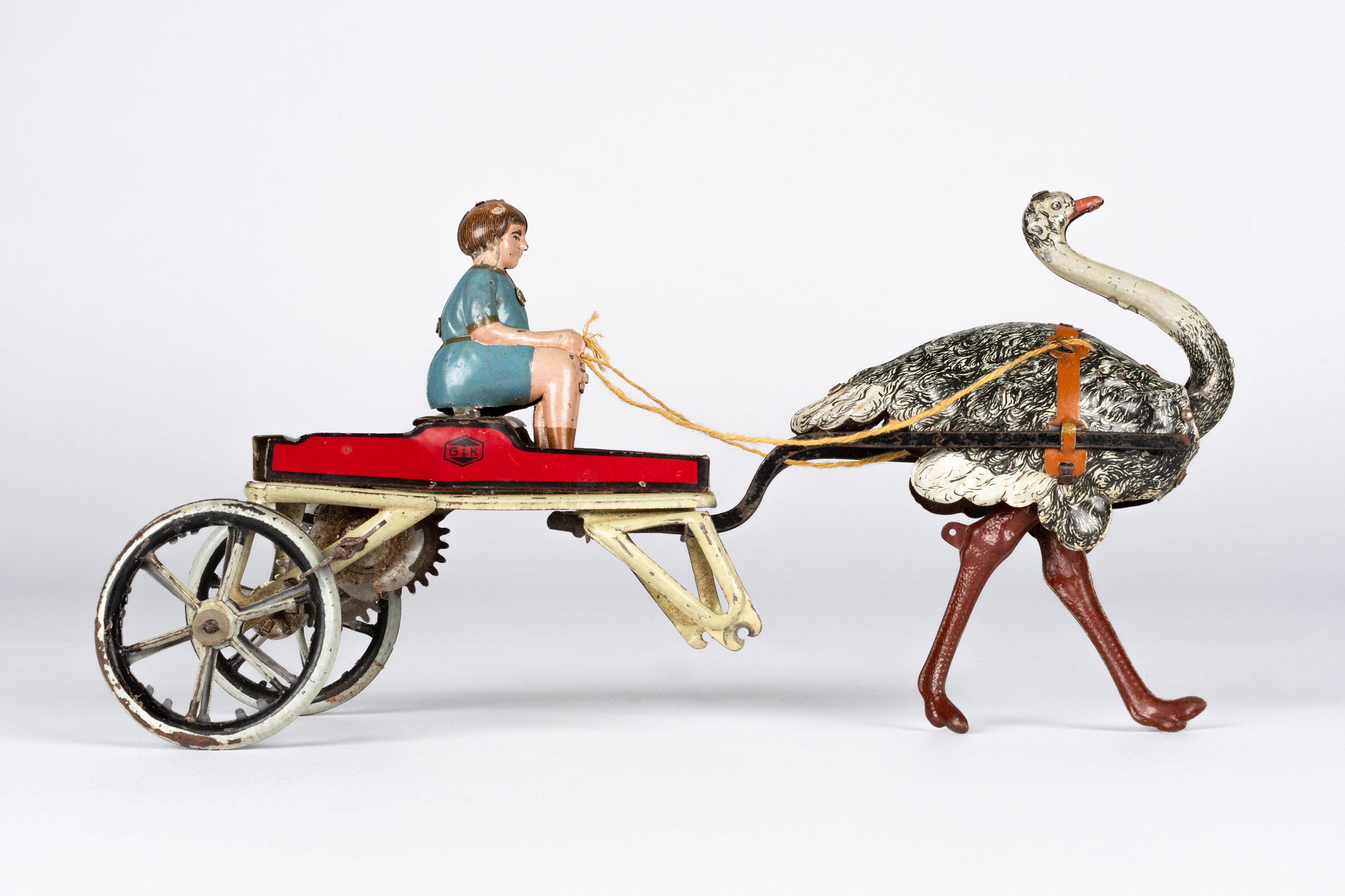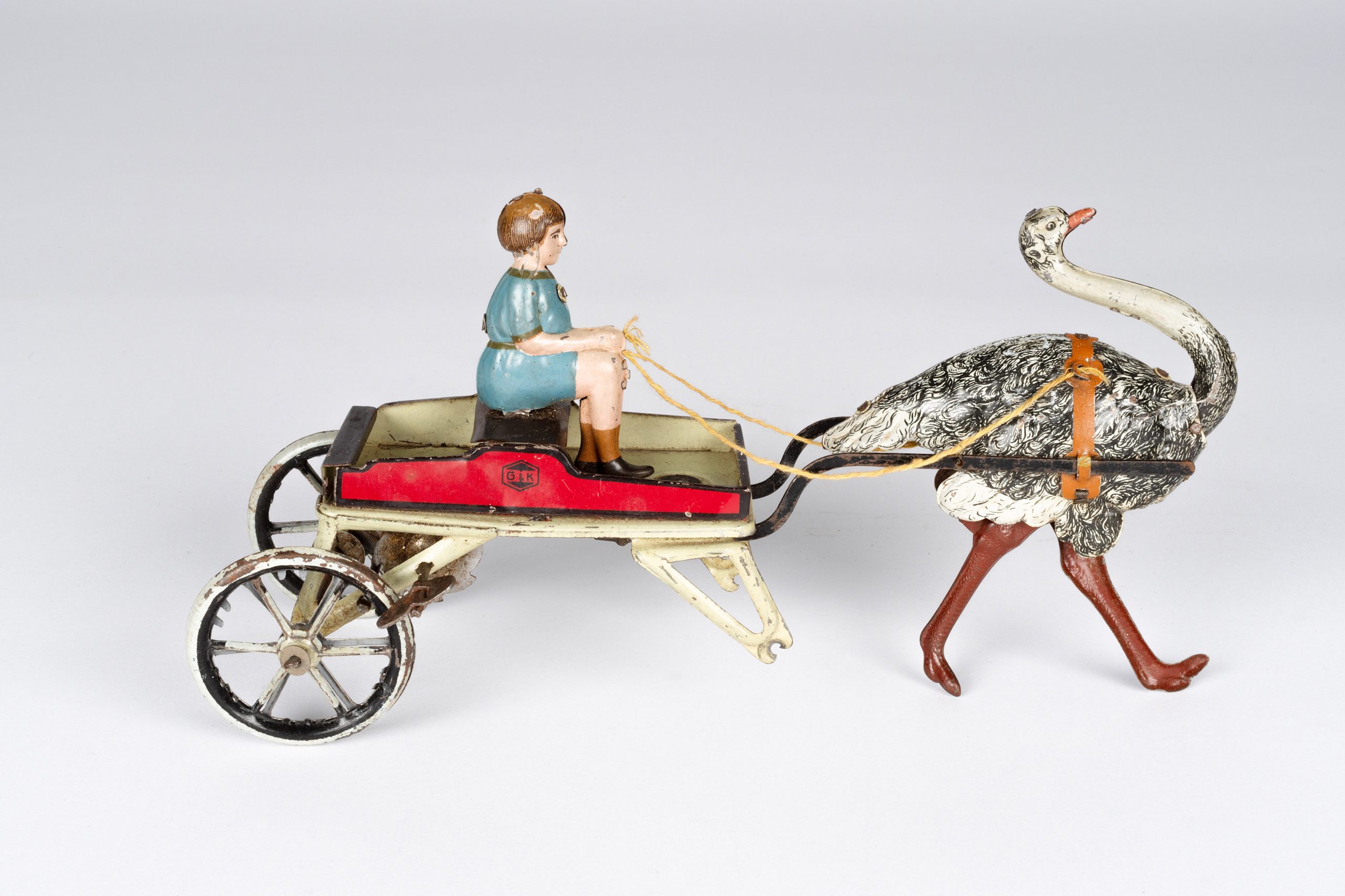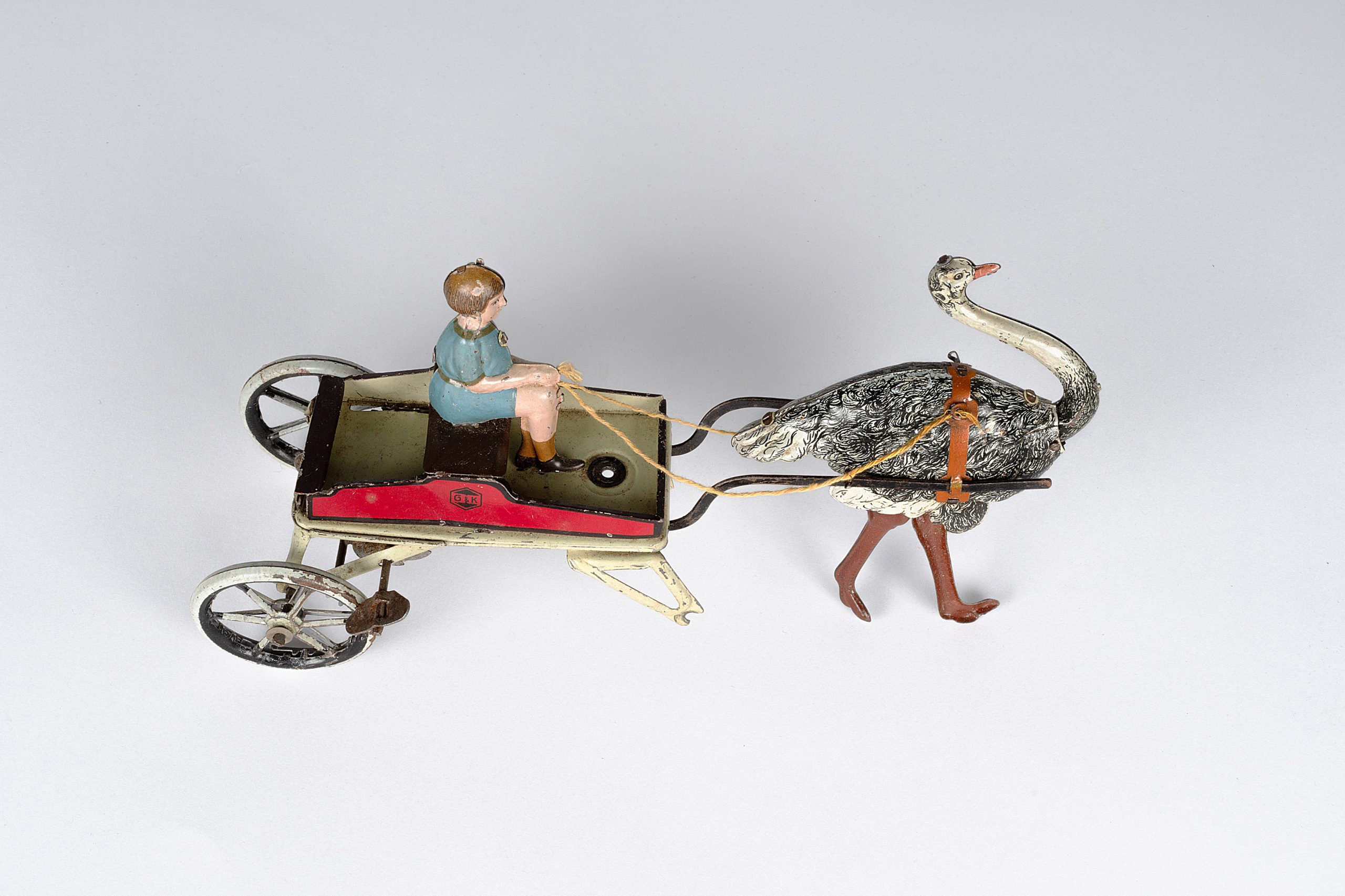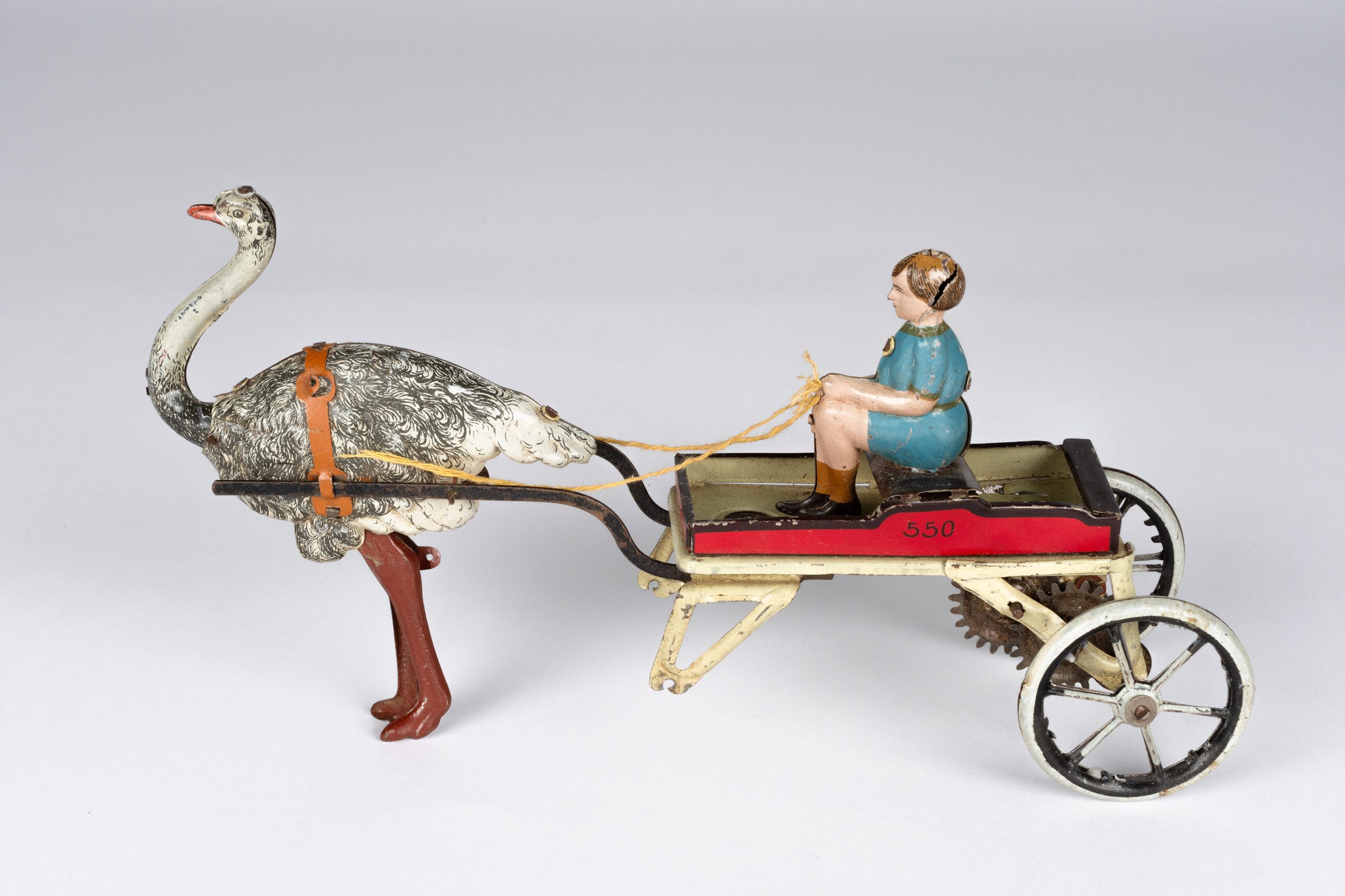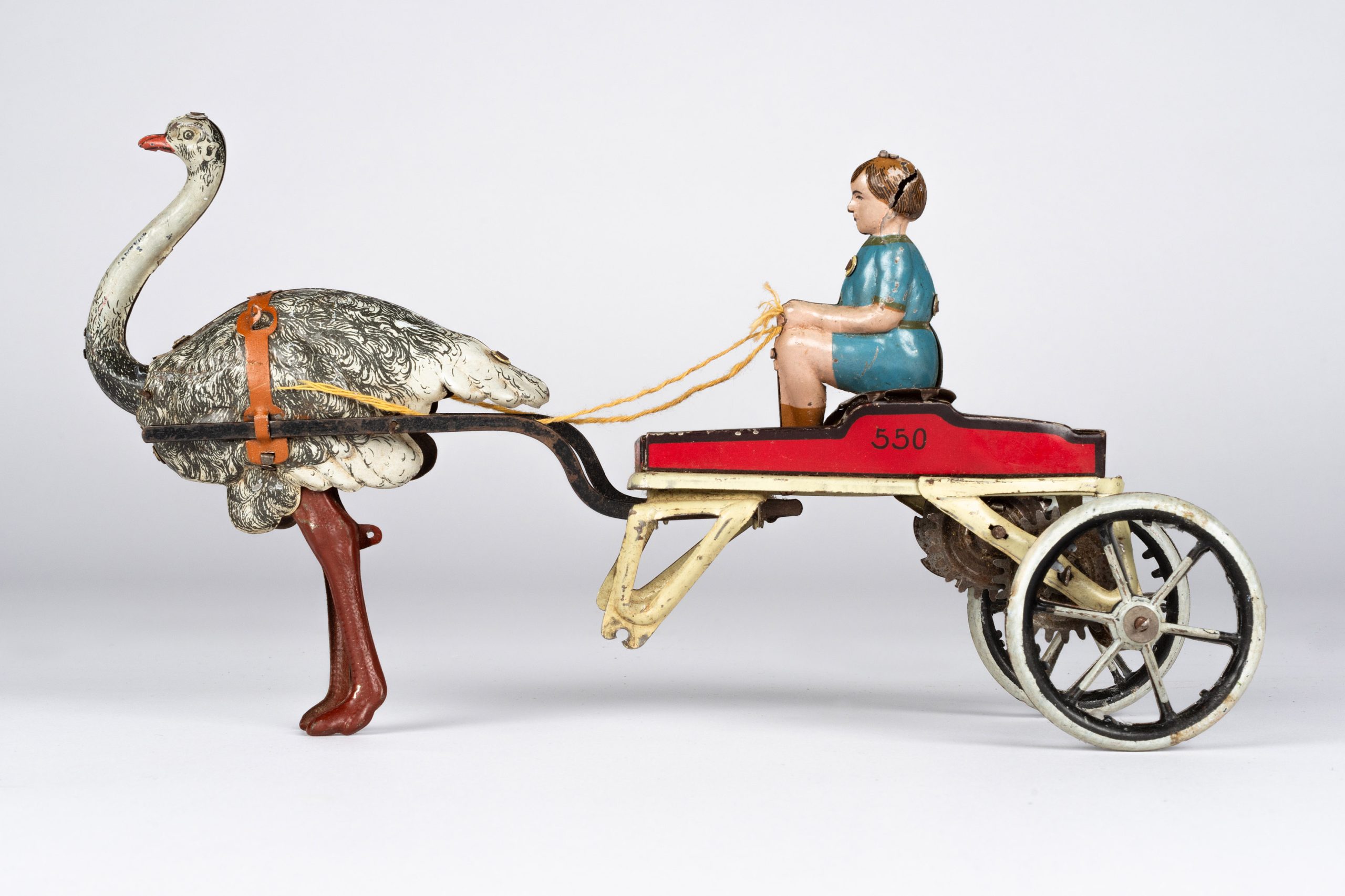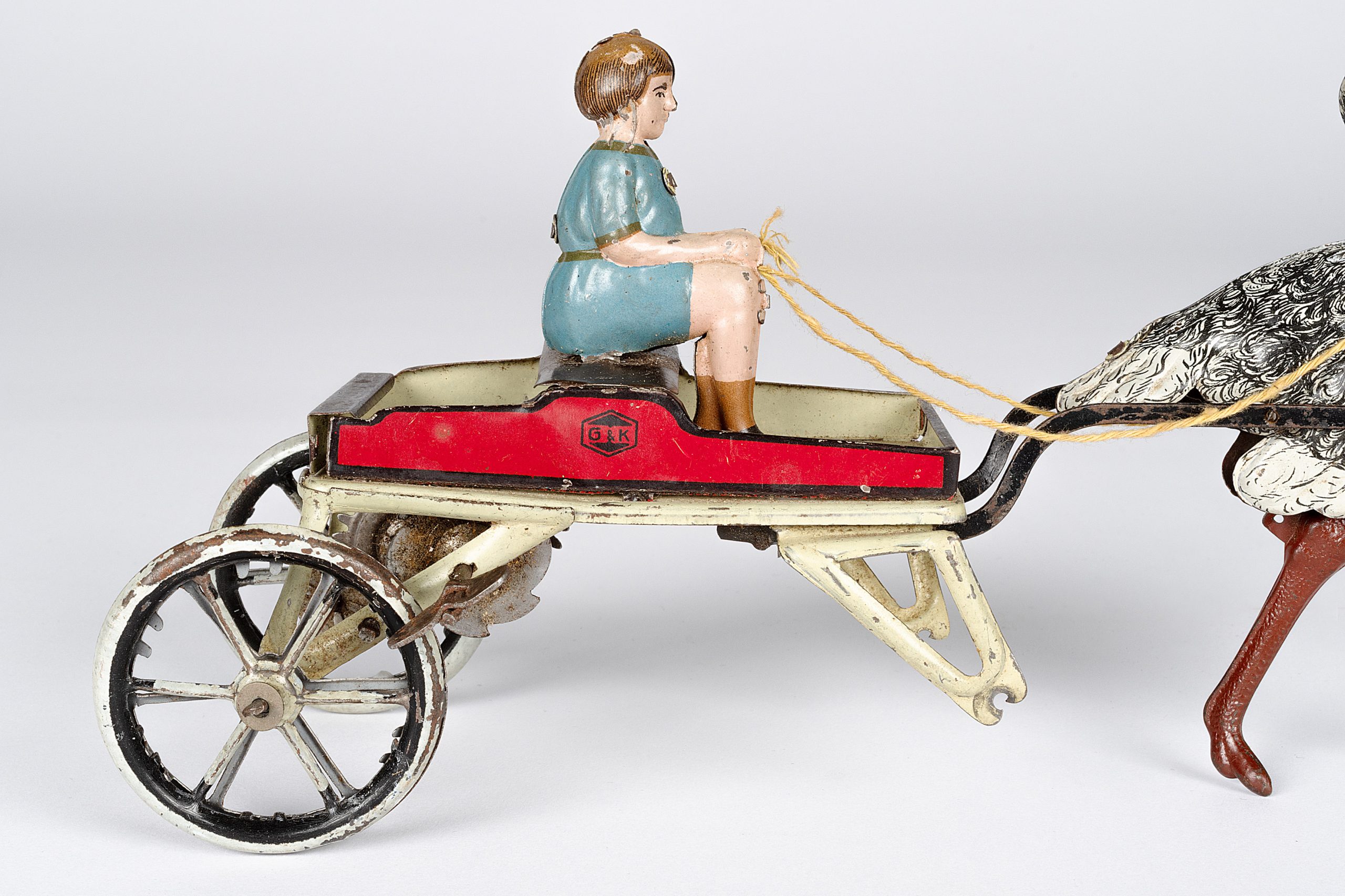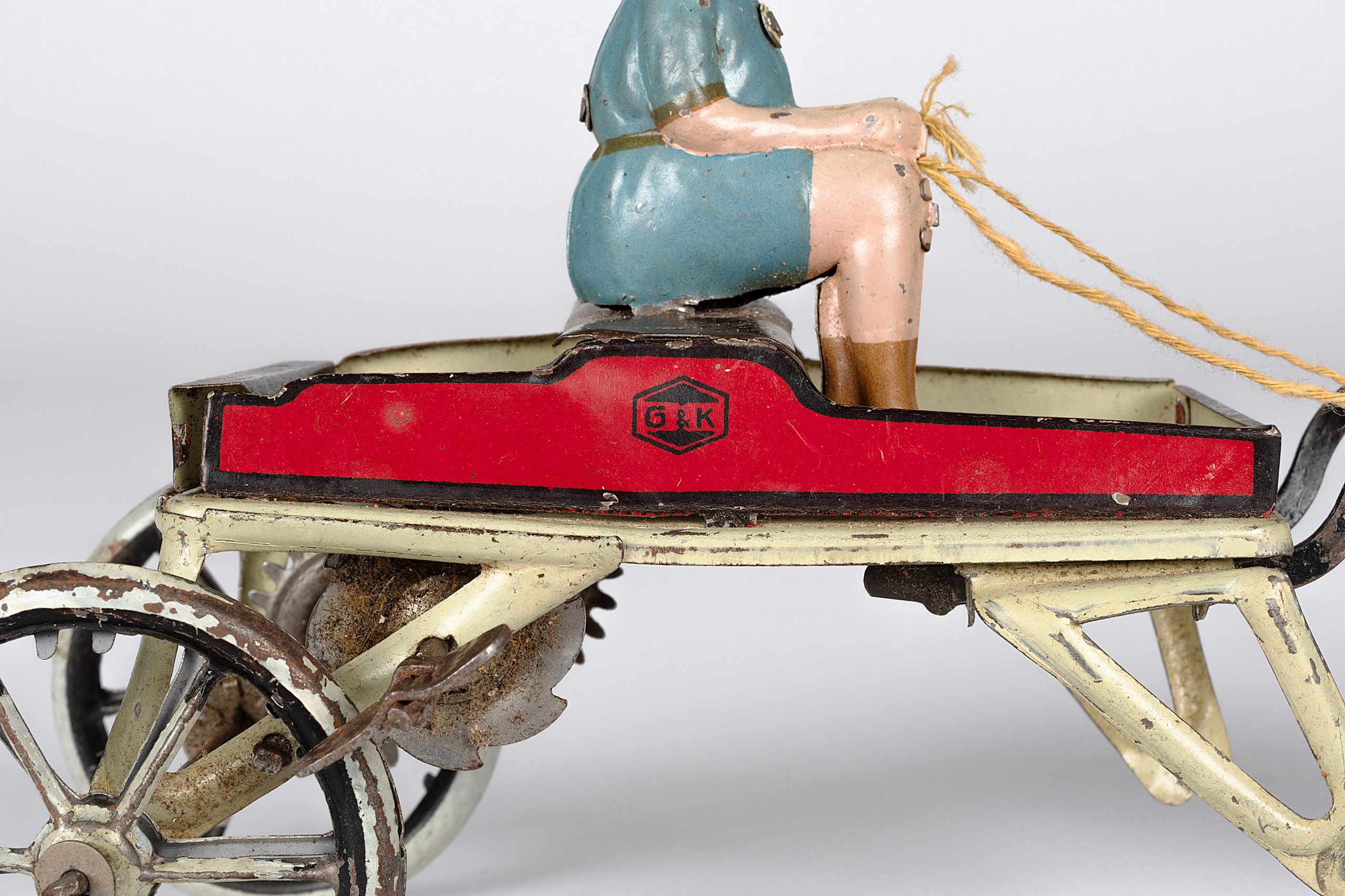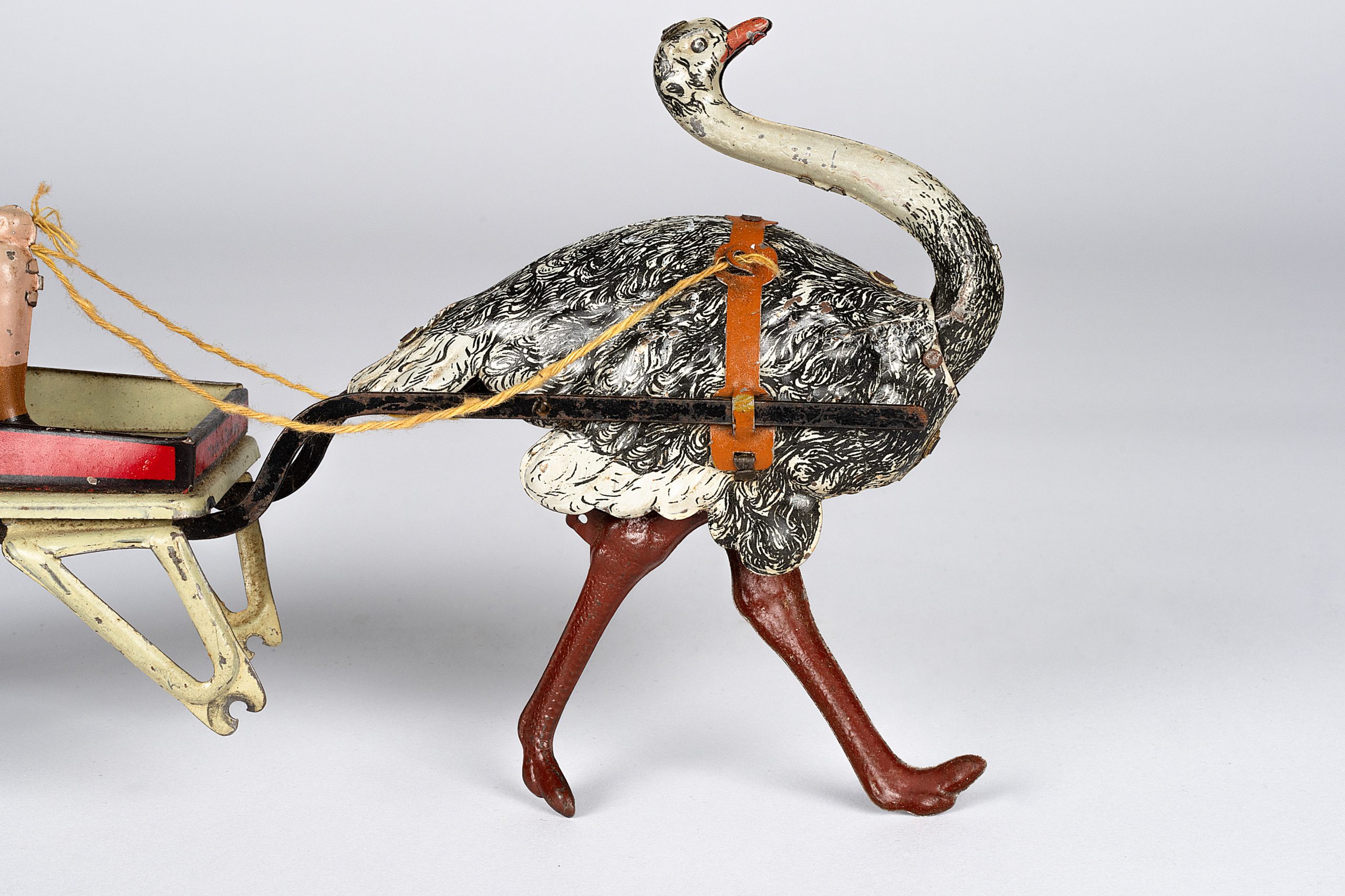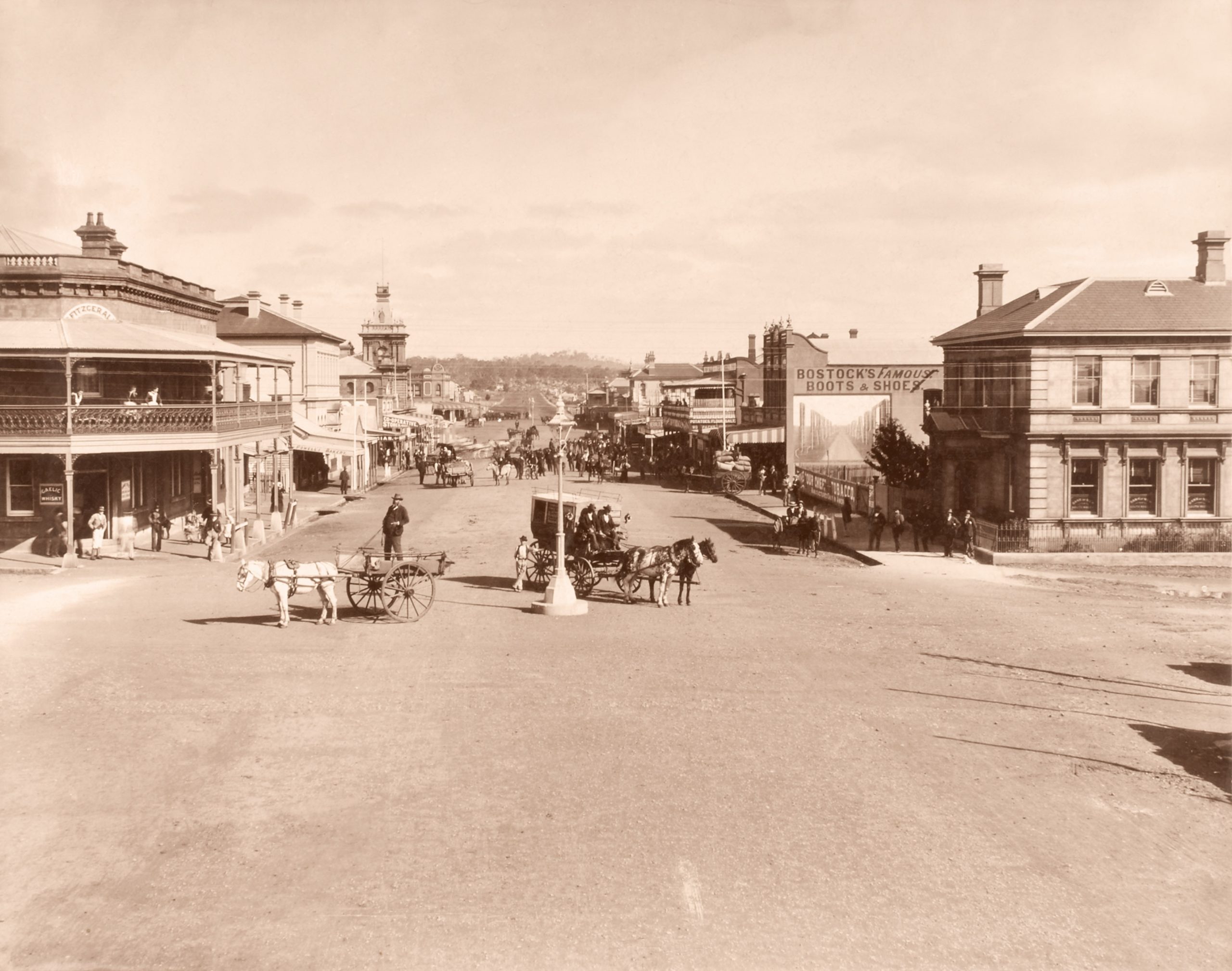An Ostrich-Drawn Cart
The Magical Evolution of Wind-Up Toys
In the late 1800s, wind-up toys emerged in Europe and captivated young hearts across the continent. This phenomenon began with simple designs, but soon evolved into the production of intricate and enchanting toys which could move seemingly of their own accord.
The whir of mechanised hands and feet, the clatter of tin wheels on wooden floors, and the bright and inventive colours of these figures all worked together to create something magical. As their popularity boomed, these toys soon began taking incredible journeys. Toys travelled across oceans to become cherished companions to children across Australia.
Glen Innes, though a small town, became a part of this global play revolution, importing toys like this clockwork cart, made by the Germany toymakers Greppert and Kelch in the early 1900s. These toys not only entertained the local children but also served as tangible markers of the expanding trade routes connecting distant corners of the world.
This toy is in relatively poor condition – the rear left wheel is sprung apart, and the body of the carriage is bent. These signs of wear and tear are suggestive of a toy well loved. The use of tape to fix the cart together further reinforces the notion of a cherished companion that was, perhaps, mended with care by a young owner. If you look closely, you can see the cogs and gears which give the ostrich a life of its own.


